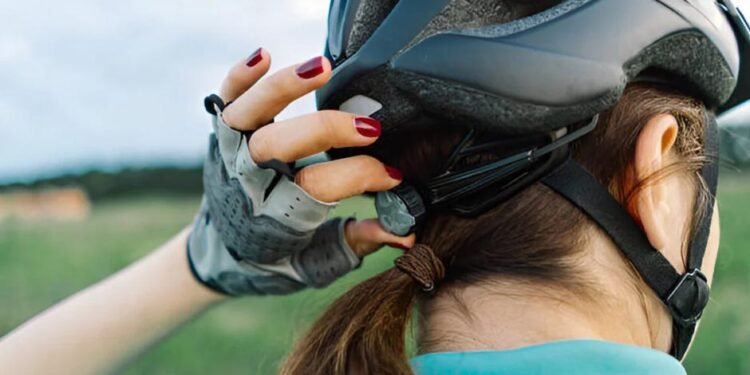For cyclists of all ages, having the right safety gear is essential for reducing injury risk and enhancing visibility on the road. A well-fitted helmet is particularly important, as it provides critical protection in case of a fall or collision. However, helmet fit is often overlooked, and improperly fitted helmets may not offer the intended protection. Ensuring that your helmet and other safety gear are properly adjusted can make a significant difference in keeping you safe on every ride.
In addition to helmets, there are a variety of safety accessories available to enhance protection. From reflective clothing to padded gloves, these items can add layers of safety, especially during high-traffic times or low-light conditions. Taking the time to invest in quality gear and ensuring a proper fit allows cyclists to prioritize their safety and ride with confidence.
The Importance of Helmet Fit
A helmet that doesn’t fit correctly is essentially ineffective in providing the protection it’s designed for. To ensure a proper fit, place the helmet level on your head, covering the top of your forehead, and adjust the straps so it sits snugly without shifting. The helmet should be tight enough to stay in place but comfortable enough to wear for long periods. Taking the time to adjust each part of the helmet ensures it stays secure and performs as intended during any sudden movements.
Improperly fitted helmets can slide or tilt during a fall, exposing parts of the head to potential impact. To maximize safety, consult fitting guides or store professionals to ensure the helmet is adjusted correctly before each ride. Proper helmet fit is a simple yet powerful way to protect yourself from serious injuries. With the right fit, a helmet becomes a reliable safeguard, allowing cyclists to ride confidently and safely.
Selecting the Right Helmet for Different Types of Cycling
Different types of cycling may require different helmet designs. Road cyclists often use lightweight, aerodynamic helmets designed for speed, while mountain bikers may prefer helmets with extended rear coverage and more ventilation. For city riders, commuter-style helmets with added visibility features like lights or reflectors are ideal.
Choosing the right helmet type based on your riding style can provide added comfort and protection suited to specific cycling needs. Investing in a helmet tailored to your type of riding ensures you’re equipped with the appropriate protection for your chosen routes.
Additional Safety Gear to Enhance Protection
Beyond helmets, cyclists can benefit from additional safety gear, especially for long rides or high-traffic areas. Items like padded gloves, knee pads, and elbow pads offer extra cushioning and protection against abrasions. Reflective vests or jackets can improve visibility, helping other road users see you, especially in low-light situations. These items are especially useful for younger cyclists, adding layers of protection that boost both confidence and safety.
For added safety, consider lights and mirrors that can be attached to your bike or helmet. These accessories allow you to see and be seen on the road, significantly enhancing safety in busy or dimly lit areas. With the right safety gear, cyclists are better equipped to handle a range of environments and weather conditions, making every ride safer and more enjoyable.
The Role of Reflective Gear and Lighting
Reflective gear and lighting are essential for riding in low-light or nighttime conditions. Reflective clothing, tape, or stickers placed on your bike, helmet, and shoes make you more visible to drivers, especially on dimly lit streets. In addition, front and rear lights are critical for riding at dawn, dusk, or night, making you visible from a greater distance. These simple yet effective additions can significantly reduce the risk of accidents by alerting drivers to their position on the road.
Investing in high-quality lights and reflective accessories can help prevent accidents by ensuring that other road users are aware of your presence. These visibility measures are vital for cyclists who want to ride safely during early morning or evening hours. Enhanced visibility not only keeps you safer but also fosters a sense of confidence, allowing cyclists to navigate dimly lit environments with ease.
Maintaining and Inspecting Safety Gear
Just like any other equipment, safety gear needs regular maintenance to remain effective. Helmets should be inspected for cracks or signs of wear, especially after a fall, as even small damages can compromise their protective capabilities. Similarly, check the batteries in your lights and the condition of any reflective elements on your gear to ensure they remain visible.
Replacing safety gear when it shows signs of wear is essential for ongoing protection. Regular maintenance and timely replacements help keep your gear in optimal condition, ensuring it provides the safety benefits you rely on during your rides.
Teaching Children the Importance of Safety Gear
For young cyclists, understanding the importance of wearing safety gear is an essential lesson. Teaching kids how to properly fit their helmets and put on their gear ensures they’re protected as they learn to ride. Parents can set a positive example by always wearing their own safety gear and reinforcing safety habits, like checking helmet fit before each ride.
Creating a routine around safety gear instills lifelong habits in young cyclists. By prioritizing helmet use and other protective gear, parents can encourage safer biking practices for their children and reduce the risk of accidents.
Knowing What to Do After an Accident
Even with the best safety practices in place, accidents can happen. If a cyclist experiences an injury due to a fall or collision, seeking appropriate medical care is the first step. Following up with professional assistance can also help address any legal or insurance-related questions that arise after an accident. For those needing guidance, helping cyclists with injury claims in Fort Collins can provide essential support in navigating these processes.
Having access to knowledgeable resources allows injured cyclists to focus on recovery while ensuring they understand their options for pursuing any necessary claims. Addressing these needs promptly can ease the path to both physical and financial recovery.












